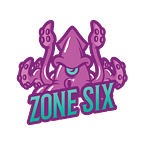Blockchain 101: Back to the Basics
Blockchain is the technology underlying cryptocurrency. It was originally created to solve the double spending problem in digital currency by keeping track of all transactions that have ever taken place.
With banks becoming increasingly digital, developers figured out how to let people send digital currency without the risk of someone sending the same money elsewhere. If you send $10 to your friend by updating your account balance, but simultaneously send $10 to your other friend before your balance changes, who gets the money? Do they both get it, one, or neither? The double-spending problem describes the difficulty of verifying the ownership of a digital asset. How can we be sure that a digital asset is only spent once? With real cash, it’s very simple. The physical bill changes hands and is now in your wallet. You now own that money.
If it wasn’t for the double-spending problem, theoretically every digital asset could be used as a form of currency. However, digital files can be cloned, copied, replicated and shared infinitely. Measures to stop this either simply don’t work or involve some central authority — like a government. Blockchain is the solution to this.
When someone joins a blockchain network, they receive a copy of all past transactions (blocks) and each new transaction (block) must be approved by everyone else in the network before it becomes part of the blockchain. In this way blockchain is decentralized and everyone has a say on what blockchain looks like at all times.
A blockchain has three main attributes: it’s distributed, immutable, and provides transparency .
- Distributed — meaning that there is no central authority that controls blockchain. It is owned by everyone that contributes to blockchain, making it decentralized .
- Immutable — meaning blockchain data cannot be changed. Once a block has been created it becomes locked into place and can never be changed again .
- Transparent — blockchain users have the ability to see what’s going on in blockchain at all times, without needing permission or logging in.
Data inside a blockchain is visible to everyone — this transparency ensures trust among blockchain users. Each block contains two parts, a cryptographic hash of the previous block, and transaction data. The blockchain ledger prevents any one person controlling what is contained within it as no one can change the past blockchain without consensus from at least 51% of network users. This means any attempt at changing historical blockchain data would be very hard, if not impossible, due to having to synchronize with other computers on the network.
Modern blockchain technology evolved from earlier networks such as BitTorrent and Napster, where users shared digital content online through peer-to-peer (P2P) networking without the use of a centralized server. P2P network architecture allows programs to connect with other computers on the Internet using file sharing protocols like TCP/IP and UDP.
In blockchain, there are no servers or centralized databases to be attacked or corrupted as blockchain secures data through decentralization rather than a central authority. This is exactly why blockchain technology can be used to create more transparent and accountable systems of governance. Blockchain also makes it possible to process transactions instantly, which would allow users on devices connected to Internet of Things(IoT) device ecosystems to make instant payments.
A blockchain is shared by all nodes participating in a system. There are rules that help to keep blockchain secure but it’s important not to trust them blindly. Rules exist to protect blockchain from disruption yet they are designed by humans who are fallible. All blockchain technology is open-source which means the code is visible, allowing blockchain to be publicly audited.
The blockchain system has evolved over the years through different iterations of blockchain networks like Bitcoin, Litecoin and Ethereum. Today blockchain applications are being written in almost all common programming languages but it’s still relatively new for many developers.
While blockchain was originally created for validation of digital currency transactions, the possibilities blockchain has to offer reach far beyond this original purpose. Many people now believe blockchain can be used as a solution for any type of transaction that is immutable and needs to be traceable. There are many applications for blockchain outside of just being a ledger, including storing medical records and voting data, robot to robot interfacing (think autonomous vehicles), or even a new and more open internet that protects user privacy.
Bitcoin was the first blockchain ever created, but there are now thousands of different blockchains available: Ethereum, Cardano, XRP, and Chainlink, just to name a few. There is no central blockchain authority and anyone can join and contribute to any blockchain they wish simply by running the software on their computer or participating in community development online.
Although blockchain can benefit both consumers and businesses, there are still barriers to its adoption that will have to be addressed before the technology becomes mainstream. On a daily basis most people still would rather conduct transactions with banks than online payment systems due to concerns about security and privacy. Proof of work blockchains, such as Bitcoin, also require energy-intensive computations known as ‘mining’ which require computer hardware that utilize unsustainable resources to perform complex mathematical calculations in order to be rewarded with blockchain currency.
Blockchain technology has the potential to change the way people view money, but it is still not quite fully adopted by the mainstream public. Not all blockchain technologies are equal, and no one blockchain network possesses all of the qualities needed to succeed long-term. A blockchain’s usefulness depends on various economic factors including demand for blockchain transactions, supply of new blockchain tokens, fiat currency exchange rates, and the strength of its underlying community network .
Blockchain technology is still very new and not many people understand it yet. If you want to get into blockchain right now, then Zone Six tutorials can help you get started out on your path to creating value through cryptography!
